Fast App: Shaking up Yacht Design
Alongside Caustic Visualizer for Maya, Imagination Technologies' R2100 ray-tracing acceleration card helps renowned architect Greg Lynn meet the punishing schedule for his revolutionary GF 42 trimaran.
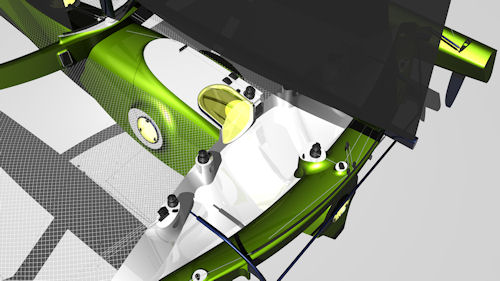
January 15, 2014
When Greg Lynn designs a trimaran, the result is no ordinary boat. The renowned designer, author and teacher—named by Forbes as one of the world’s 10 most influential living architects—is aiming to create not only one of the highest-performance racing yachts yet built, but a completely new language for boat design.
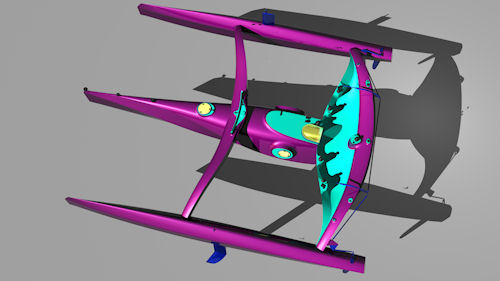 |
And thanks to Imagination Technologies’ Series2 R2100 ray-tracing acceleration card and its Caustic Visualizer viewport plugin for Maya, the process by which the trimaran—currently codenamed the GF 42—is being designed is equally extraordinary.
“I’ve done some work in the boat industry over the past couple of years, and while it’s very sophisticated in terms of analysis and construction, it’s very backward in terms of design,” says Lynn. “Although the materials are close to the level of sophistication of the aerospace industry, the way things are designed is very much the way they were done in the days of wood planks.”
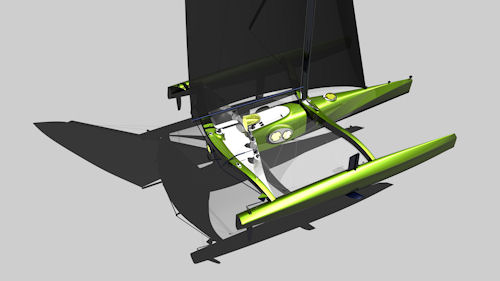 |
With the GF 42, Lynn intends to change that. Working in partnership with yacht designer Frederick Courouble, structural engineer Herv © Devaux, and computational fluid dynamics (CFD) experts Benjamin Herry, Ph.D., and CFDmax, Lynn aims to create a design language more in keeping with the high-tech process by which modern yachts are constructed.
“I think there’s a signature quality to the forms that you don’t get in a typical trimaran,” he says. “The term boat-builders use is ‘agricultural,’ which means ‘non-designed’. Boats are designed purely for performance, and performance is really based on what the last one was. Everyone from the sailing industry who’s seen the GF 42 has been shocked at just at how different it is.”
Changing the Way Designers Communicate
To communicate this new design language to boat builders Westerly Marine, Lynn relies on high-quality photorealistic visualisations, created using Maya and the Caustic Visualizer plugin.
“If you’re going to ask someone to do something in a different way to the one they’re used to, you have to show them how to do it,” he says. “Part of that is building mock-ups, but another part, which can be a lot quicker and less expensive, is to show them photorealistic images.”
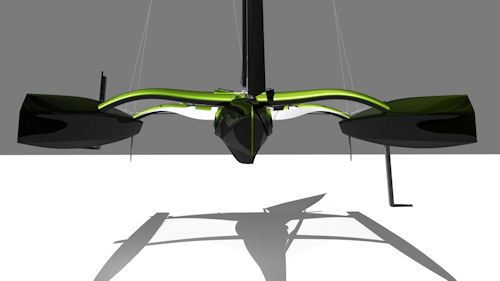 |
Photorealistic images are also necessary to document the evolution of the GF 42, which is being recorded for a book, a filmed documentary and an article in The New York Times. Lynn estimates that the team at his design practice, Greg Lynn FORM, is generating more than 100 new images a month—a throughput only made possible by the R2100 acceleration card, which works in conjunction with Caustic Visualizer to provide true, real-time ray-tracing.
“In the past, if I were to show someone a design, I’d go to two folders ]on my hard drive] and say, ‘Here are the images we did six months ago, and here are the images we did three months ago,’” he says. “Now there are weekly changes, and a weekly set of photorealistic renderings to go with them. It’s a continual process, not milestones.”
But while the impact of Caustic Visualizer and the R2100 card on Lynn’s schedule has been profound, its impact on his design workflow has been even greater.
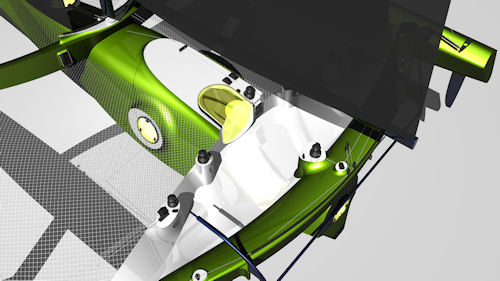 |
“For me, rendering is more of an issue in the design process than a presentation tool,” he says. “It’s not so much about being able to render materials photorealistically; it’s about getting a quality of space and light.”
Lynn works in 3D from the very start of a project, beginning by “sketching” out forms in Maya. Although he and his team use a range of other design tools, including Rhino and MicroStation, the most intensive part of his work is done in the software.
So as to not become distracted by detail too early, Lynn works primarily in wireframe display mode, with shading to get a sense of volume and closure. Caustic Visualizer, with its ability to display accurate shadows in real time, takes this workflow to a new level.
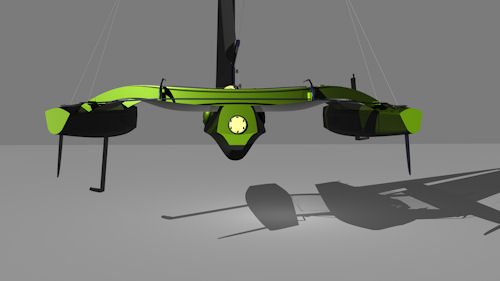 |
“I can’t tell you what a difference it makes when you’re looking at something complex, to be able to throw shadows on it right away and move the light around,” he says. “It means you don’t need to build a physical model if you don’t need to. And we’re constantly building physical models. We’re overrun with the things.”
Pioneering a New Language of Form
Another benefit of Caustic Visualizer was its ability to show accurate reflections in real time. For Lynn, this is critical for visualizing the role glass will play in his designs.
“A lot of people think of glass as being invisible, so they think of a glass wall as a transparent wall,” he says. “When you start to put on reflections, it gives you a better idea of how that transparency is really going to behave. If you look at something that has layers of glass and transparency on a machine without a Caustic card, it looks really hollow on the screen.”
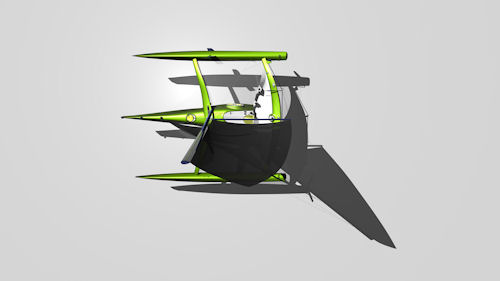 |
For Lynn, the effect of being able to change the lighting interactively on his designs and see how the reflections respond is subtle, but profound.
“It changes your sensibility,” he says. “You start to think in a more spatial way. If you can see glass as both transparent and reflective, it changes the character of the space you’re drawing.”
The Power of Interactive Ray-tracing
Lynn is using Caustic Visualizer and the R2100 ray-tracing acceleration card on a range of other jobs, from industrial design for Swarovski to case packaging for Google. But the GF 42 trimaran will be the biggest test yet of the technology’s power.
The result, Lynn hopes, will be a yacht that looks as revolutionary as the techniques through which it is being constructed. And now that he’s finished rewriting the rules of nautical design, he aims to introduce other designers and architects to his workflow.
So, how does he convince visitors to his studio of the power of fast interactive ray-tracing?
“Show ’em,” he laughs. “Whenever we show anyone the performance, they flip. And you don’t have to show them a whole lot. All you have to do is open a file, and let them navigate.”
More Info
For more information on this topic, visit deskeng.com.
Subscribe to our FREE magazine, FREE email newsletters or both!
About the Author
DE’s editors contribute news and new product announcements to Digital Engineering.
Press releases may be sent to them via [email protected].






